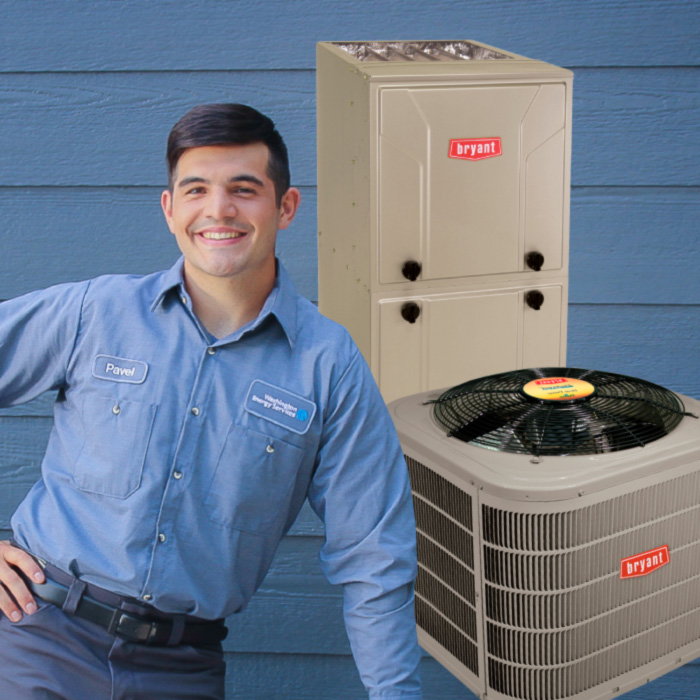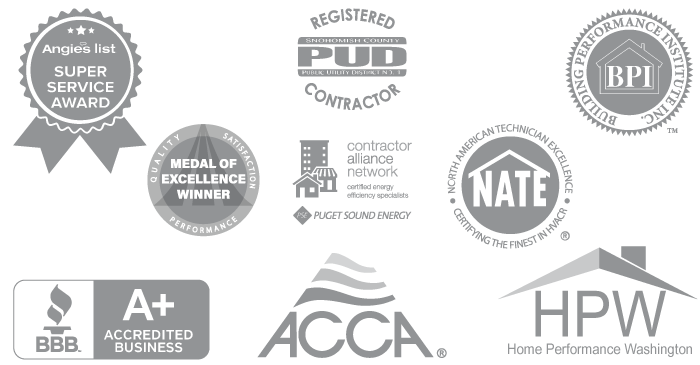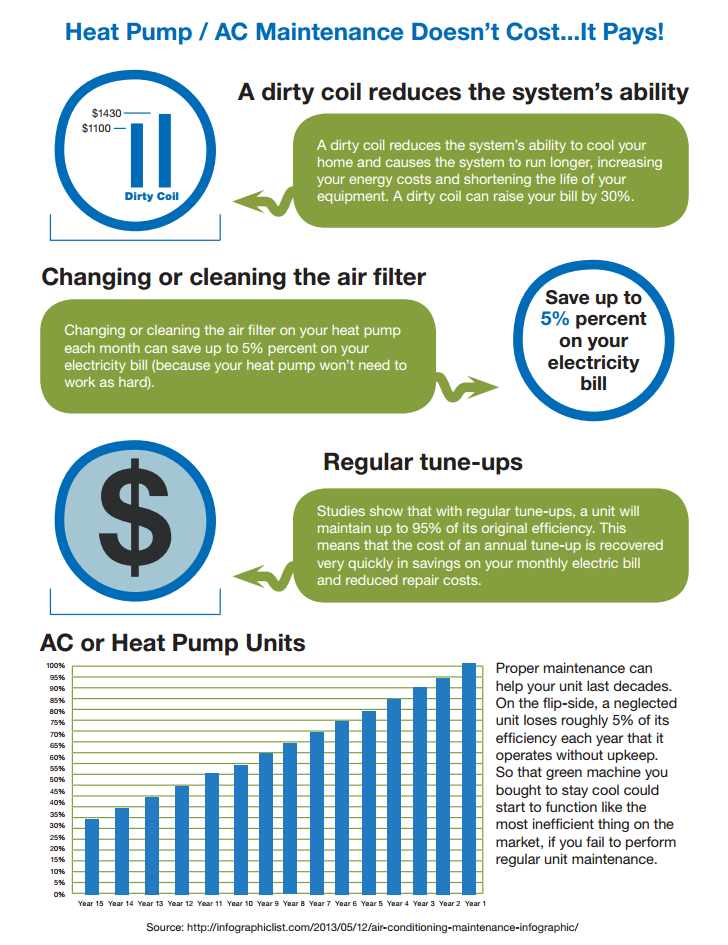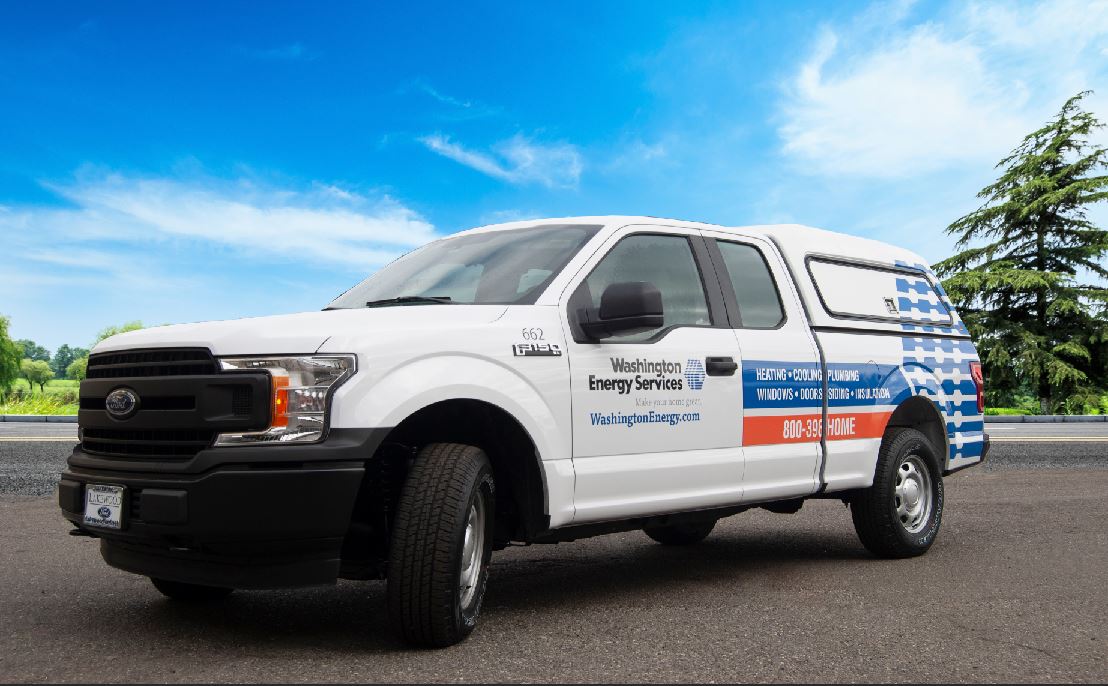

HVAC Service & Repair
Expert Furnace Service, A/C Service, Heat Pump & Heating System Repair for Seattle Area Homes
As the largest heating company in the Northwest, Washington Energy Services has fixed thousands of heating systems. We service most major brands of heating equipment. Our NATE certified, factory trained service technicians are standing by for furnace service, and also heat pump and air conditioning repair. Home owners from Sea-Tac to Lynnwood trust Washington Energy Services for furnace service and repair. Schedule your service today!
We recommend annual maintenance, and often it is a condition of your equipment’s warranty.
Product Details
Our technicians have the experience you need.
- Trusted, Trained and Supervised Employees
- NATE Certified
- Background Checked & Drug Tested
- Licensed, Bonded and Insured
Consumer Reports recommends using NATE Certified contractors.

Diagnostic & Repair:
If you’re having issues with your equipment, our experts will perform diagnostics to get to the root of the issue and see to it that the repair is carried our swiftly and correctly.
No heat?
If your heat is not working, call us 24/7 for fast assistance: 800-398-4663.
Skilled, licensed technicians
Breakdowns related to your HVAC systems can be frustrating. Why not call someone to get it right the first time? Our skilled technicians have the experience to fix your Puget Sound furnace, heat pump or A/C issues.
Servicing most major HVAC brands
Rest assured that we will be able to tackle your furnace, heat pump or A/C issue—after all we service most major brands: including Bryant, Carrier, York, Lennox, Coleman and Rheem. Contact us today to book a service appointment.
Clean and caring
We leave our job sites clean and our customers satisfied. We follow up with post-service surveying to be sure you’re happy.
Join the Guardian Maintenance Club
The equipment in your home needs to be maintained every year to keep your systems running efficiently and effectively. When you join the Guardian Maintenance Club, you save money on annual tune-ups and gain an ongoing discount you can use throughout the year.
Take care of your systems and keep them performing for years to come. Available for heating, cooling, tankless water heaters, generators and gas fireplace inserts.
Similar to automotive service types, an HVAC repair service appointment is geared at diagnosing and fixing a problem with your HVAC equipment. A technician will come to your home, perform a diagnostic check of your equipment and identify the issues and solutions. Any repairs will cost extra.
A maintenance service is done on a healthy system to proactively ensure it continues to be running smoothly. During the maintenance all of the system components are checked and adjusted to ensure they are working properly.
- Check your A/C – make sure it’s turned on.
- Do the filters need replacing?
- Check your thermostat – if your thermostat is not working or if it is incorrectly calibrated, it may not tell the air conditioner to turn on. First, make sure that the temperature setting on the thermostat is set below (or lower than) the indoor temperature showing on the thermostat.
- Check to make sure the blower door on the air handler is securely closed.
- Check that all switches in and around the air conditioner are set on, including the external safety switch usually near the condensing unit.
- Check to make sure the circuit breakers at the electrical panel are on.
- Check the outdoor unit “disconnect switch” to make sure it is in the “ON” position. The disconnect switch is located near the outdoor unit.
- Check the Safety Shut Off Switch (it looks like a light switch) located at or near the furnace to be sure it is in the “ON” position.
- Check all return air grilles and supply air registers to make sure they are not blocked by furniture and to make sure they are open and blowing air.
There are several reasons why you might experience an extra noisy furnace. To find out which one of the following is true for your home, call for a furnace service appointment or fill out the request service form. This is a diagnostic service call, not a maintenance issue.
Heating equipment and ductwork make noise as they heat and cool, and as the heat comes on and off. A boom, rattle, hum or fan noise is common. But more significant noise complaints about furnaces can indicate other issues:
• If your furnace is inside the house, it may be located in an area that is magnifying the sound it makes – such as under a staircase. Often moving the furnace to another part of the house can reduce that noise. You may find that it’s in an area that was previously occupied by another older type of furnace, and you never heard those sounds from that one. Please keep in mind that modern furnaces are built differently – with multiple speeds and stages – which may create different sounds and require more airflow than your old ductwork has available. If the furnace doesn’t get enough air, it gets cranky.
• Furnace is making more noise because it’s turning on and off more frequently. It may need repair, may not have been sized properly to fit the needs of your house, or may not have the airflow available that it needs from the ducts. The ducts are most often the culprit. Sometimes adding a cold air return can solve this. Ensure your vents are all open. If you are closing off vents in your house this can contribute to the issue.
• Furnace just started making noise after running quietly for years. This is a sign of an aging furnace or a potential mechanical problem. If you also smell a burnt odor, please call for service.
• Furnace is humming loudly and it didn’t use to. The vibrations in the furnace may have jogged something loose (a screw perhaps), which is vibrating. It may also be an early indicator of a problem with the motor.
• Ductwork is also part of your heating system and the humming or rattling noises can come from a loose duct. Ducts can be reinforced and made tighter to reduce vibration noise.
If furnace noise is bothering you, call for a service appointment today.
A furnace tune-up is a way of saying maintenance service. Just like service for your car, a tune-up maintenance will keep your furnace working properly. Tune-ups should only be done by trained and qualified heating technicians.
Seattle furnaces can run nine months of the year. Based on the average temperatures in our area, if you compared running your furnace to a car it would get the equivalent of 1.8 million miles over its expected lifespan of 15 years. Your heating system will work hard for you, but like your car, doing routine and regular maintenance will keep it running smoothly, avoid problems, and keep your warranty intact.

- Check your thermostat – make sure it’s ON.
- Furnace is not producing heat – try to reset home circuit breaker.
- Furnace is not producing enough heat – check and change your clogged filter.
- Check your safety switch on your furnace door – a furnace door safety switch prevents the fan and burner from coming on while the access panel is removed.
- Ensure the area around your furnace is clean and unobstructed – this will prevent additional dust to accumulate and also help to prevent unexpected fires.
- Check the burner flame – do you see a flame at all? You will want to have your burners inspected to make sure they are free from debris.
- Check your limit switch – a bad limit switch could cause the blower to run continuously, and as a result, it will significantly shorten the lifespan of the blower.
All for home.

Award-winning service and installation.
Since 1957, homeowners have come to know us for the type of best-in-class service they deserve. Frequent winners of the Angie’s List Super Service Award and perennially among the top local contractors rated by the BBB, Angie’s List and GuildQuality.
-
A job done right
Our Home Project Advisors are ready to tailor choices to your lifestyle and budget and our installers have the experience and talent to make sure the work is done right.
-
Local, trusted, passionate
Since 1957 we have made homes all over the Puget Sound more efficient and comfortable. Our employees are craftsmen with a contagious enthusiasm for rolling up their sleeves and exceeding expectations.
-
Trained, licensed, bonded and drug tested
Each technician receives a minimum of 100 hours of on-the-job-training each year to ensure everyone is up to date on best practices. All of our employees undergo background checks and drug screens.